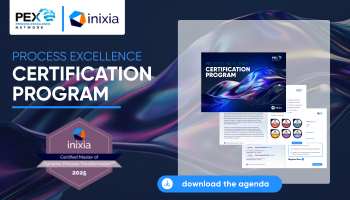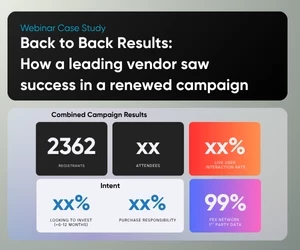10 process excellence trends for 2026
Major trends are reshaping how organizations define, achieve, and sustain process excellence
Add bookmark
Process excellence in 2026 – what is it going to look like? Process excellence is undergoing a rapid transformation. As organizations strive to boost efficiency, effectiveness, and quality across operations, the definition of process excellence continues to evolve. It now represents a dynamic blend of technology adoption, improvement, design, and management strategies aimed at optimizing performance and driving sustainable growth.
A convergence of tech innovation, shifting business demands, and significant workforce changes is creating both unprecedented opportunities and complex challenges. This ‘perfect storm’ is reshaping how organizations define, achieve, and sustain process excellence, prompting critical questions about the future of operational performance and competitive advantage.
Join the PEX Network community

Don't miss any news, updates or insider tips from PEX Network by getting them delivered to your inbox. Sign up to our newsletter and join our community of experts.
Learn More10 process excellence trends
As we head into 2026, here are 10 trends that are expected to play major roles in shaping the process excellence landscape in the coming year.
1. AI Agents spread like wildfire
As it becomes ‘easier’ to create artificial intelligence (AI) agents, they will pop up like “mushrooms,” says Caspar Jans, head of process management and enterprise modernization GTM for EMEA and APAC at Celonis.
“The main challenge is going to be how to control them and keep them working for you instead of against you. After all, automating a broken process just results in the same broken process, but faster.”
The PEX Report 205/26 found that more than half (59 percent) of surveyed businesses are planning to invest in agentic AI/AI agents in the next 12 months.
2. AI hype explodes in a bubble
Roland Woldt, process management and mining expert and co-host of What’s Your Baseline? podcast, predicts the current AI hype to explode in a bubble. “I see little tools and a lot of hot air. What we need is a sober conversation about how to improve business results by optimizing process performance.”
For this you need to understand your as-is (process mining), design option (in your repository), and then simulate to have a data-driven scenario comparison, he adds. “What I see today is more ‘gut feeling’ and ‘tech playground’ that are not rooted or embedded in any process. No wonder why MIT sees no results in 95 percent of all AI projects (besides issues like hallucinations and lack of trust in AI results, if I might add).”
3. Process mining, management and orchestration converge
The continued convergence of process mining, process management, and process orchestration is another trend that Jans expects to play a major role in 2026. This reflects a growing trend in digital business operations where data-driven insights, agile process control, and automation are brought together to optimize and transform enterprise workflows.
“This will provide a ‘one-stop shop’ for organizations to perform process excellence without having to integrate different types of applications with each other,” Jans says.
Watch Caspar Jans explore the latest developments in process excellence
4. Process and data models collide
An emerging area of “semantic alignment” is the exchange of data sets between data lineage and management and business architecture platforms, something that is likely to make its mark next year, according to Robert Öberg, SoftwareAG and Keith Bohanna, ARIS.
This allows business architecture to have an enhanced understanding of areas such as service flows, which utilize at rest data, which can be critical for the optimization of both services and customer journeys. “Organizations can identify which data assets and process activities are critical to key business services, map dependencies on IT systems and third parties, and assess the impact of potential disruptions.”
Together, they create a common language that bridges business stakeholders and technical teams, ensuring that data strategy aligns with business strategy.
5. Rise of “vibe coding”
A number of companies are opting for a new type of business automation realization: application development through interactive “vibe coding,” says J-M Erlendson, business process management (BPM) expert and co-host of What’s Your Baseline? podcast.
“A good example is the ‘human-AI’ offering of LSA Digital, which leverages an ongoing AI-powered conversation to develop the interface and functionality of enterprise systems,” Erlendson says. “It’s a funny term (vibe), and an interesting shift for process excellence practitioners, moving from more formalized requirements definition and creation to a rapidly-iterative development process.”
Erlendson admits concerns that this concept “sacrifices a LOT in governance and control for ease of use/pattern change,” especially since the “coder” can only QA what they see and not actually how the program works, leaving it open to security and bias gaps introduced unintentionally by a well-meaning AI.
“Still, this is so much more than ‘no-code’ development – it’s literally prompt-based engineering, and that’s really cool (and effective) for small teams of thought leaders!”
6. Object-centric process mining finally takes off
Object-centric process mining (OCPM) has been ‘the future’ for years, but now it’s catching up in practice, says Lotte Vugs, CEO and co-founder of Konekti. OCPM is technology that enables the analysis of interrelated objects and events involved in business processes. It is an emerging branch of process mining that aims to analyze event data from mainstream information systems more naturally.
“With centers of excellence (CoEs) converting legacy models into object-centric ones, more tools offering it, and with new innovations that will be announced in Q4, it will be a lot easier to actually use object-centric data models,” she adds.
Watch Wil van der Aalst discuss object-centric process mining
7. Process intelligence evolution
Modern businesses will continue to shift from traditional process mining (what happened?) to process intelligence (what will happen and what should we do?) in 2026. This will enable real‑time analytics and predictive monitoring that allows organizations to detect bottlenecks, deviations, and failures before they cause damage. It will also amplify and enhance AI adoption, says Vugs.
Process excellence teams will increasingly rely on data, dashboards, monitoring systems, anomaly detection, and machine‑learning models. Continuous improvement will become ‘on‑going’ rather than periodic with processes monitored in near real‑time. Meanwhile. process intelligence insights will feed into both strategy (where to invest) and operations (which processes to change).
Almost a quarter (23 percent) of surveyed firms use process intelligence to support business transformation, the PEX Report 2025/26 found. Furthermore, 22 percent are planning to increase investment in process intelligence in the coming year.
8. Battle on bureaucracy
While existing topics such as ‘no AI without process intelligence’ and ‘disentangling reality using object-centric process mining’ will continue to be major process excellence trends next year, Wil van der Aalst, renowned globally as the ‘godfather’ of process mining and chief scientist at Celonis, expects to see significant attempts to tackle bureaucracy in the sector.
- Playable bureaucracy: Turning red tape into a game. “Imagine employees, students, or citizens as players inside the bureaucracy, leveling up by simplifying steps, cutting approval loops, or auto-resolving rules. Every form becomes a ‘quest’ and very simplification generates points.”
- Regulation as API: Bureaucracy becomes code. “Bureaucracy thrives on interpretation, endless discussions about what rules mean. Goal; make every rule executable. Instead of policy PDFs, we get ‘governance as code’: machine-readable, testable, callable. Paradoxically, bureaucracy becomes more trustworthy when it behaves like code; deterministic, explainable, auditable.”
- AI as bureaucracy therapist: Institutional psychoanalysis. “Instead of automating bureaucracy, let AI analyze its pathology. Every organization has bureaucratic trauma such as fear of risk, obsession with control, and distrust of judgment. An ‘AI therapist’ diagnoses these behaviors, patterns of overprocessing, recursive approval loops, and learned helplessness.”
9. Execution-focused versus communication-focused documentation
Erlendson sees a big rift forming between ‘execution-focused’ and ‘communication-focused’ documentation. “A good example is the approach from folks like Kevin Tan with Process-bility, which purposely strips much of the technical language and executable relationships in favor of the readability and ease of creation,” he says.
While that certainly makes things easier to write and explain, involving a larger group of stakeholders without requiring as extensive training, it also means you’re essentially doing ‘work-and-a-half’ to turn those into machine-readable-automation-ready documents, according to Erlendson.
“There’s debate about whether or not that’s good (e.g. it absolutely ‘forces’ the conversation between business and IT to refine capability requirements), but I would argue that without excellent program oversight and management (and executive alignment) this could further divide the audience/participants for process excellence. Still, I do love nicer and more readable models!”
Watch J-M Erlendson reflect on modern BPM
10. Skills and culture shifts
As technologies and business needs evolve, skills requirements change while the human factor becomes more critical in leadership, culture, and change readiness. Employers are prioritizing skills and talent in areas such as AI, data analytics, and change management. Process excellence professionals will need hybrid skillsets that span process design, data analytics, change leadership, and tech awareness.
Meanwhile, change fatigue is real. Many employees are subject to multiple, simultaneous transformations that increase adoption challenges and risks. Governance and empowerment must evolve with process tools, culture, and leadership needed to support continuous improvement.
Professional Process Excellence Certification Provided by Inixia in Partnership with PEX Network

Designed for today’s fast-paced, competitive business landscape, this certification signals a deep capability in operational excellence and innovation. It enables professionals to lead process transformation across functions and industries, and become change agents within their organizations. Whether you're advancing your career or strengthening your team’s performance, the Certified Master of Dynamic Process Transformation provides a forward-thinking, results-driven approach to creating sustainable value and long-term success.
Learn More












